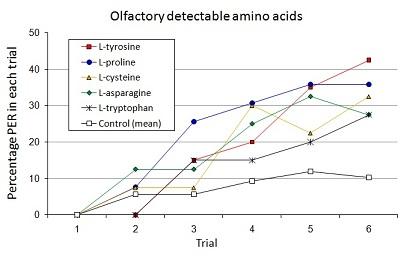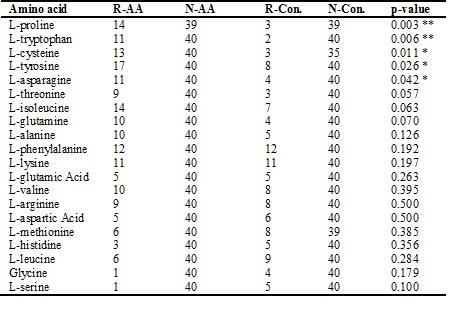Olfactory detection of amino acids
Detectable amino acids
Five out of the 20 amino acids tested turned out to be detectable to the honeybees when presented at a concentration of 100 mM. These five are L-tyrosine, L-proline, L-cysteine, L-tryptophan and L-asparagine.

Non-detectable amino acids
Honeybees did not detect the odors of L-alanine, L-arginine, L-aspartic acid, L-glutamic acid, L-glutamine, glycine, L-histidine, L-isoleucine, L-leucine, L-lysine, L-methionine, L-phenylalanine, L-serine, L-threonine, L-valine. There was no significant difference between the percentage of AA-bees responding towards the odor of the amino acids and the percentage of control-bees responding towards the background stimulus alone.
For some of these amino acids (L-aspartic acid, L-methionine, L-histidine, L-leucine, glycine and L-serine) the responses towards the amino acid odor was even lower than the responses towards the background stimulus alone.

Olfactory detection thresholds

The honeybees’ median olfactory detection thresholds for these five amino acids are 12 mM for L-tyrosine and L-cysteine, 50 mM for L-asparagine and L-tryptophan, and 100 mM for L-proline.
Comparison to vertebrate species
The present results indicate that the honeybees’ olfactory detection thresholds for amino acids are generally higher than those found for vertebrate species.

Responsible for this page:
Director of undergraduate studies Biology
Last updated:
05/18/11
